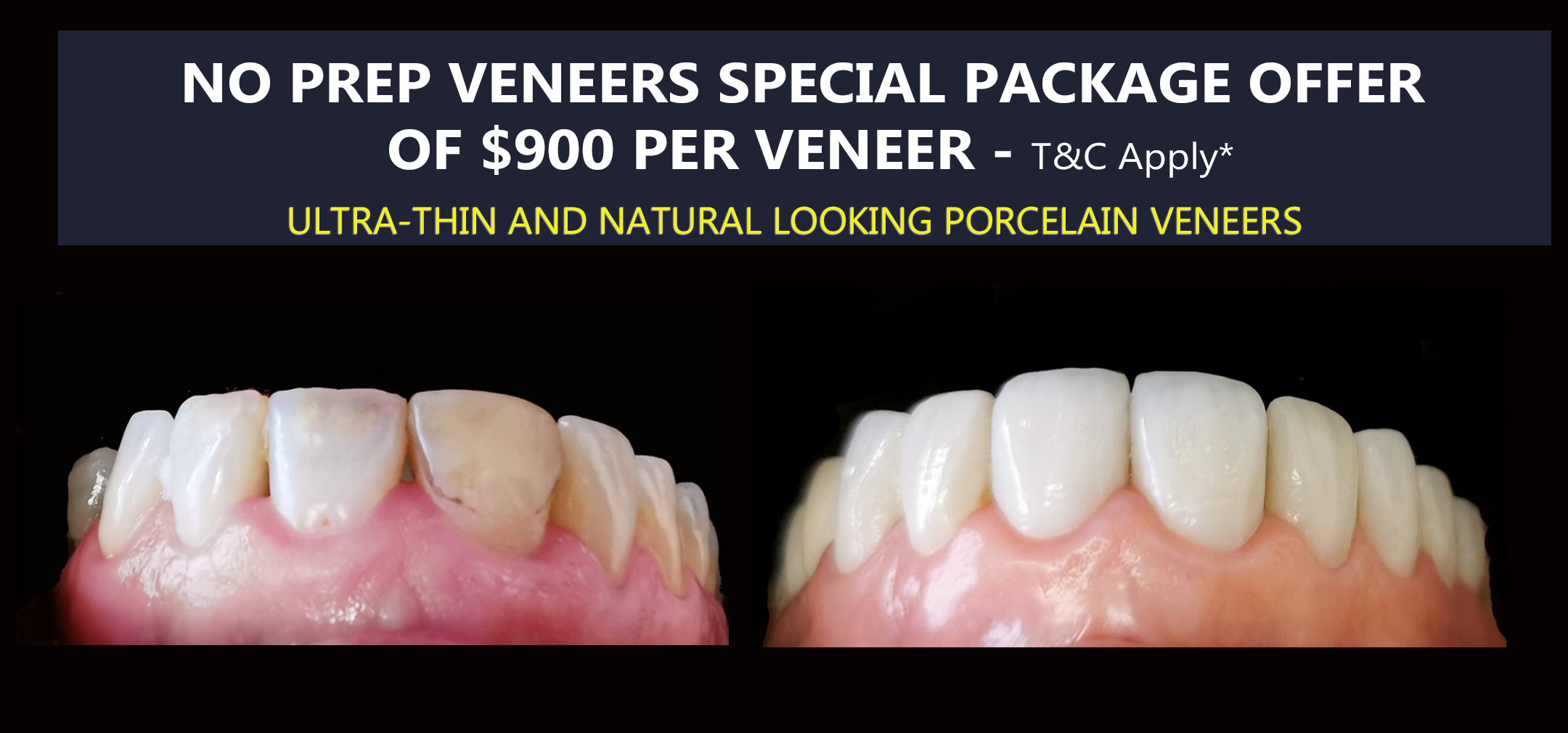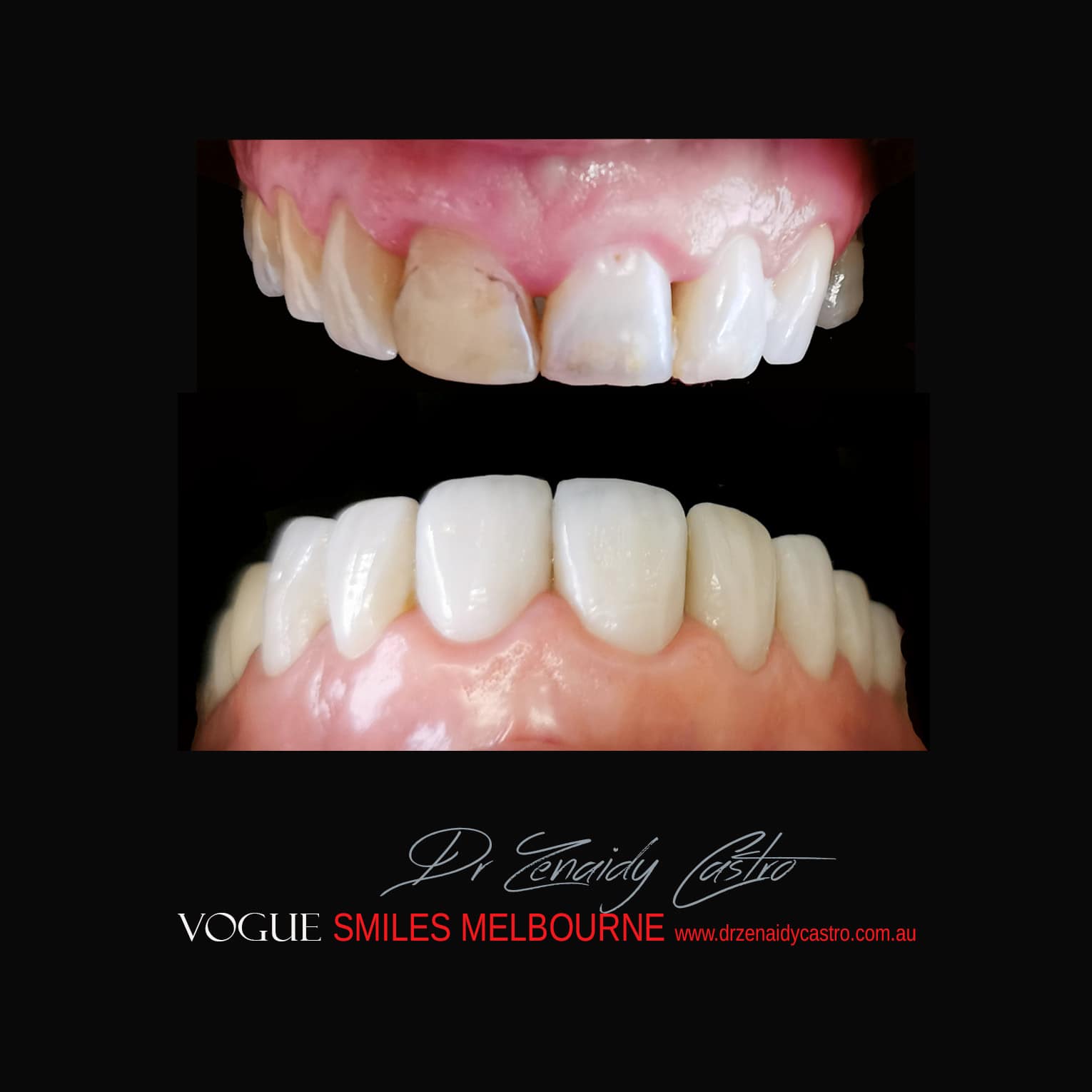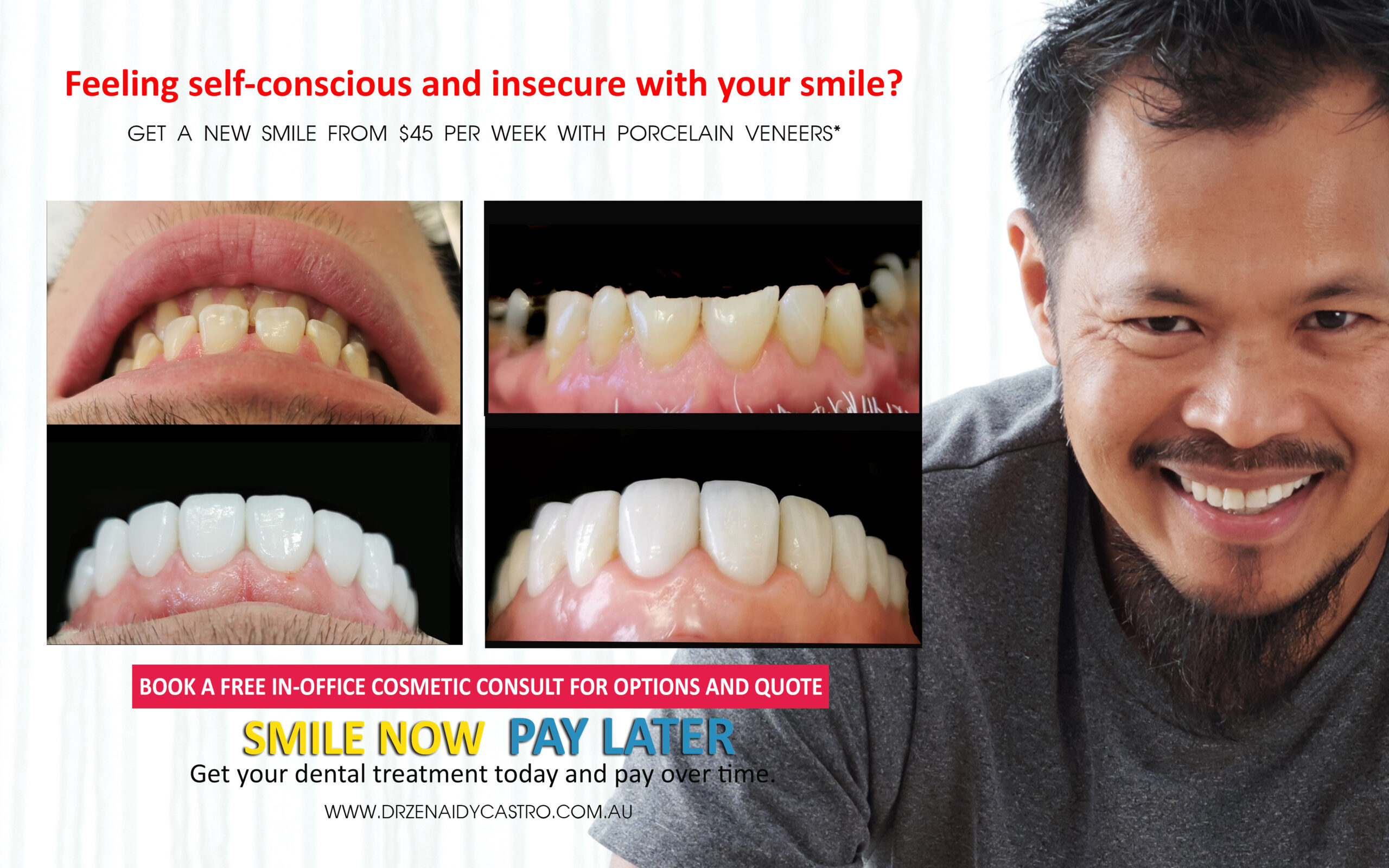

Key Highlights: Composite vs Porcelain Veneers
✨ Porcelain veneers provide superior translucency and light reflection, closely mimicking natural tooth enamel
✨ Composite veneers are more opaque and may appear less lifelike, especially in strong lighting
✨ Porcelain is highly resistant to stains from coffee, wine, and smoking—retaining its color and brightness for years
✨ Composite resin is more porous and prone to staining, requiring regular polishing and more frequent replacements
✨ Porcelain veneers have a glass-like, glossy finish that maintains shine and resists wear over time
✨ Composite veneers can dull over time and are more likely to show scratches or lose luster
✨ Porcelain allows for intricate layering that creates depth and realism, ideal for a beautiful smile makeover
✨ Composite veneers are often applied in fewer layers and may look flatter or more artificial in some cases
✨ Porcelain veneers offer better long-term matching with adjacent teeth and are more aesthetically harmonious
✨ Composite veneers are easier to match initially but may shift in color or tone after extended use
✨ Porcelain reflects light in a way that enhances natural depth and youthfulness of the smile
✨ Composite doesn’t scatter light as effectively, sometimes making teeth appear two-dimensional
✨ Vogue Smiles Special Offer!
???? Enjoy our special $900 per tooth Prepless Porcelain Veneer package — minimum of 10 teeth required. No grinding, no damage to natural teeth – just a stunning, natural smile makeover!
???? Call Vogue Smiles Melbourne and Noble Park today for a comprehensive general and smile makeover treatment — offering competitive pricing, bundled porcelain veneer specials, interest-free dental plans, and Superannuation access assistance.
REQUEST AN ONLINE PERSONALIZED QUOTE ➤
REQUEST FOR A FREE TELECONSULTATION ➤
Achieving a radiant, symmetrical, and natural-looking smile is now more accessible than ever. Thanks to advanced cosmetic dental options, you can enhance your smile with treatments that cater to both aesthetics and functionality. Two of the most popular solutions in smile enhancement are Composite vs Porcelain Veneers. Each option offers distinct advantages, costs, and aesthetic outcomes.
This comprehensive guide explores the pros and cons of both veneer types, helping you make an informed choice for your beautiful smile treatment.
What Are Dental Veneers?
Dental veneers are thin coverings placed over the front surface of your teeth to improve their appearance. They are ideal for addressing various cosmetic concerns, including discoloration, chips, uneven shapes, and small gaps.
There are two main types of veneers:
- Composite Veneers (also called direct veneers)
- Porcelain Veneers (also referred to as ceramic or indirect veneers)
While both options aim to transform your smile, they differ in application method, longevity, and cost.
Key Summary:
- Veneers are thin cosmetic shells that enhance your smile.
- The two main types are composite and porcelain.
- Each offers unique benefits and is suited to different needs.
Composite Veneers: An Overview
Composite veneers are made using a tooth-coloured resin material applied directly to the teeth. The dentist sculpts the resin by hand to match the shape and colour of your natural teeth. This procedure typically requires only one visit.
Benefits of Composite Veneers
- Quick Application: Completed in a single dental appointment.
- Affordable Option: More budget-friendly than porcelain.
- Minimal Tooth Reduction: Often no enamel needs to be removed.
- Easily Repairable: Chips or damage can be quickly corrected.
Limitations of Composite Veneers
- Shorter Lifespan: Typically last 4–8 years.
- Stain-Prone: Composite material can absorb stains over time.
- Less Natural Appearance: May not mimic enamel translucency as well as porcelain.
- Weaker Material: More susceptible to chipping.
Key Summary:
- Ideal for quick, budget-friendly smile improvements.
- Best for minor corrections and low-stress bite areas.
- Less durable and more prone to staining.
Porcelain Veneers: An Overview
Porcelain veneers are custom-crafted from ceramic material in a dental lab. These veneers are designed to match your tooth structure precisely and are bonded to your teeth during a follow-up appointment.
Benefits of Porcelain Veneers
- Superior Aesthetics: Natural translucency closely mimics real enamel.
- Stain Resistant: Keeps your smile white for years.
- Durable: Lasts 10–20 years with proper care.
- Customized Fit: Individually made for optimal appearance and fit.
Limitations of Porcelain Veneers
- Higher Cost: More expensive than composite.
- Involves Tooth Prep: Some enamel may be removed.
- Multi-Visit Procedure: Requires at least two appointments.
- Difficult to Repair: Damaged veneers often need replacement.
Key Summary:
- Offers the most lifelike and long-lasting smile transformation.
- Requires a larger investment of time and money.
- Best for full smile makeovers and high-impact areas.
Treatment Time & Procedure Comparison
Composite Veneers:
- One appointment.
- No lab work required.
- Immediate results.
Porcelain Veneers:
- Two or more visits.
- Custom fabrication in a dental lab.
- Temporary veneers may be worn in between.
Key Summary:
- Composite is quicker and suitable for urgent smile upgrades.
- Porcelain takes longer but yields more tailored results.
Cost Consideration in Beautiful Smile Treatment
The cost of veneers depends on the material, dentist’s experience, and complexity of the case.
Composite Veneers:
- Range: $350–$700 per tooth
- Touch-ups required over time
Porcelain Veneers:
- Range: $900–$2,500 per tooth
- Longer-lasting, fewer repairs needed
Key Summary:
- Composite veneers are budget-friendly.
- Porcelain veneers offer long-term value.

Review the important terms and conditions that apply to this offer.
Durability and Longevity
Composite Veneers:
- Lasts 4–8 years
- Prone to wear and staining
- May need periodic polishing
Porcelain Veneers:
- Lasts 10–20 years
- Maintains shape and shine longer
- Less need for frequent maintenance
Key Summary:
- Porcelain is the more durable, low-maintenance option.
- Composite suits those seeking short-term solutions.
Aesthetic Outcomes
When it comes to natural appearance, Porcelain Veneers usually take the lead due to their light-reflecting properties. However, skilled dentists can achieve excellent results with composite as well.
Composite Veneers:
- Slightly opaque
- Needs regular polishing for shine
- Customization depends on dentist skill
Porcelain Veneers:
- Translucent like real teeth
- Glossy finish maintained over time
- Lab-made for exact fit and appearance
Key Summary:
- Porcelain offers unmatched natural beauty.
- Composite can deliver good results, especially in minor corrections.
Suitability Based on Dental Issues
Each veneer type addresses specific dental concerns better:
Composite Veneers:
- Small chips
- Slight misalignment
- Mild discoloration
- Minor gaps
Porcelain Veneers:
- Severe discoloration
- Irregular tooth shapes
- Larger gaps
- Worn or damaged enamel
Key Summary:
- Composite is ideal for minor, surface-level corrections.
- Porcelain is best for full-coverage cosmetic transformations.
Maintenance and Aftercare
Proper aftercare enhances the life and look of your veneers.
Tips:
- Avoid biting hard objects.
- Brush with non-abrasive toothpaste.
- Reduce intake of stain-causing foods/drinks.
- Wear a mouthguard if you grind your teeth.
- Schedule regular dental cleanings.
Key Summary:
- Both types require good hygiene and care.
- Porcelain needs less upkeep but higher initial commitment.
Which Should You Choose for Your Beautiful Smile Treatment?
The best choice depends on your goals, budget, and dental condition.
Choose Composite Veneers if:
- You want a quick and affordable solution.
- You have minor imperfections.
- You’re okay with periodic maintenance.
Choose Porcelain Veneers if:
- You seek long-term results.
- Aesthetics and durability are top priorities.
- You’re undergoing a full smile makeover.
Key Summary:
- Composite is for speed and affordability.
- Porcelain is for elegance and endurance.
Final Thoughts: Composite vs Porcelain Veneers
Both Composite vs Porcelain Veneers serve as effective tools in your quest for a beautiful smile treatment. Choosing the right one involves balancing cost, durability, aesthetic goals, and your personal dental history. Consultation with an experienced cosmetic dentist is crucial in deciding which option best suits your smile transformation needs.
Final Highlights:
- Composite is budget-friendly, reversible, and quick.
- Porcelain offers superior beauty, strength, and longevity.
- Each has a role in modern smile enhancement.
- Your dentist will guide the best treatment plan tailored to you.
Let your journey toward a beautiful, confident smile begin with the right veneer choice for your lifestyle and goals.

Optical Difference Between Composite vs Porcelain Veneers: Beautiful Smile Treatment Comparison
When it comes to achieving a flawless smile, veneers have become a popular choice for many patients. Among the available options, Composite vs Porcelain Veneers stand out as the two most sought-after cosmetic treatments. While both serve the purpose of transforming smiles, they differ significantly in terms of optical properties—such as translucency, brightness, light reflection, texture, and color longevity. These visual elements play a vital role in how natural and appealing your smile looks after treatment.

In this article, we’ll delve into the optical differences between Composite vs Porcelain Veneers to help you determine which material offers the most visually natural and long-lasting results.
1. Translucency and Light Reflection
Porcelain Veneers:
One of the most visually striking advantages of porcelain veneers lies in their superior translucency. Natural tooth enamel is slightly translucent, allowing light to pass through its surface and reflect off the inner layers, creating depth and dimension. Porcelain closely mimics this effect, making it virtually indistinguishable from natural teeth. The result is a soft, lifelike appearance that gives your smile a radiant, multi-layered glow.
Composite Veneers:
Composite resin, on the other hand, tends to be more opaque. While newer composite materials have improved significantly, they still lack the same level of light transmission and reflective properties seen in porcelain. Composite veneers may appear flatter or more “plastic” under certain lighting conditions, especially if not polished correctly or layered skillfully.
Summary:
2. Colour Stability and Stain Resistance
Porcelain Veneers:
Porcelain is a ceramic material that is non-porous and glazed, making it highly resistant to staining from coffee, red wine, tea, and smoking. The colour you choose during your initial consultation will remain consistent for years, maintaining a pristine, bright appearance without the need for frequent polishing or touch-ups.
Composite Veneers:
Composite resin is more porous and susceptible to absorbing pigments from food and beverages. Over time, this leads to discolouration, particularly at the edges of the veneers. While they can be polished to restore some brightness, composite veneers may require more frequent maintenance or replacement to maintain their visual appeal.
Summary:
3. Texture and Surface Finish
Porcelain Veneers:
Porcelain has a naturally smooth surface with a glass-like finish, which enhances its light-reflecting properties. Its glazed finish gives a healthy luster that is often indistinguishable from natural enamel. This polished surface also contributes to lower plaque accumulation and an overall cleaner look.
Composite Veneers:
While composites can be polished, they do not retain their sheen as long as porcelain. The finish on composite veneers tends to become dull with time, especially if exposed to staining agents or heavy bite pressure. Additionally, composite materials are more prone to minor scratches that affect their optical clarity.
Summary:
-
✅ Porcelain Veneers retain a high-gloss, enamel-like finish for years.
-
✅ Composite Veneers lose their shine faster and may appear dull over time.
4. Thickness and Aesthetic Layering
Porcelain Veneers:
Porcelain veneers are fabricated in a dental lab and offer the advantage of aesthetic layering. Multiple ultra-thin layers are designed to replicate natural enamel, dentin, and internal tooth features. This sophisticated design adds depth and realism that cannot be achieved through single-layer materials.
Composite Veneers:
Composites are applied directly to the teeth in a single or dual-layer technique. The layering is generally less intricate compared to porcelain. Although a skilled cosmetic dentist can achieve excellent results with composite, the finish may not be as dynamic or three-dimensional.
Summary:
5. Matching Adjacent Teeth and Natural
Porcelain Veneers:
If you are having a single veneer placed, matching it with adjacent teeth is critical. Porcelain can be custom-tinted and glazed to match the exact tone, translucency, and texture of surrounding teeth. This makes porcelain the ideal choice for natural-looking smile corrections.
Composite Veneers:
Composite can also be shade-matched during chairside application, but due to its optical limitations and greater tendency to stain over time, the initial color match may not last as long. Also, its reflective properties may look slightly off when compared with natural teeth under different lighting conditions.
Summary:
6. Light Scattering and Depth Perception
Porcelain Veneers:
Due to their crystalline structure, porcelain veneers scatter light in a way that replicates the subtle opalescence of natural teeth. This optical property enhances depth perception, making the teeth look more vibrant, youthful, and naturally contoured.
Composite Veneers:
While recent composite technologies have improved light scattering, they still do not rival the visual depth achieved with porcelain. The result may appear flatter or less vivid, particularly in close-up photos or bright lighting.
Summary:
Which Material Wins for a Beautiful Smile Treatment?
When choosing the right material for your Beautiful Smile Treatment, the aesthetic superiority of porcelain veneers is clear. They outperform composite in nearly every optical category—translucency, stain resistance, surface gloss, and depth. That said, Composite Veneers still hold value for patients seeking a budget-friendly, minimally invasive option for mild corrections.
Your decision should depend on:
Final Optical Comparison at a Glance:
| Feature |
Porcelain Veneers |
Composite Veneers |
| Translucency |
✅ Excellent |
⚠️ Moderate |
| Light Reflection |
✅ Natural, enamel-like |
⚠️ Less reflective |
| Color Stability |
✅ High (years) |
⚠️ Lower (stains over time) |
| Surface Finish |
✅ Glossy, polished |
⚠️ Polished but wears over time |
| Visual Depth |
✅ Layered, life-like |
⚠️ One-dimensional |
| Stain Resistance |
✅ Excellent |
⚠️ Prone to staining |
Key Takeaways:
-
✔ Porcelain Veneers lead in visual quality, longevity, and realism.
-
✔ Composite Veneers are budget-friendly but require more maintenance and may lack optical brilliance.
-
✔ Both can achieve a beautiful smile, but your choice depends on your aesthetic expectations and long-term commitment.






Begin Your Smile Transformation Today
Whether you’re preparing for a milestone event, stepping back into the professional world, or finally ready to smile with pride—there’s no better time to start your transformation. Let Vogue Smiles Melbourne help you reclaim the joy, confidence, and freedom that come with a radiant, worry-free smile.
Your dream smile is closer than you think. Trust your transformation to a dentist with over 3 decades of passion to Cosmetic Dentistry
Book Your Smile Makeover Consultation
???? Call (03) 9629 7664 | 0413 014 122
REQUEST AN ONLINE PERSONALIZED QUOTE ➤
REQUEST FOR A FREE TELECONSULTATION ➤



Disclaimer:
The information on this website is for information purposes only. Is not a substitute for a proper professional care and advice. Each patient’s outcomes, risks, potential complications, and recovery differ. Any dental procedure, minor or major, carries risks, some minor and some serious. Before and after images seen on our Social Media and website pages are our actual patient and have been published/posted with our patients’ permission. All of our patients photos are subject to Copyrights protection. We are strong believers in responsible aesthetics. Every cosmetic, medical, or dental procedure comes with its own set of risks and benefits. Cosmetic Dentistry results will vary from patient to patient. Call our office and book for an actual in-office consultation for us to assess if you are a good candidate for a particular treatment. All of our Specials and packages posted on this site are subject to terms, conditions and availability. The exact fee for a particular cosmetic procedure will be determined after a preliminary assessment distinguishing your unique personal needs and the type of work needed. The prices mentioned on any of our website as well as any mentioned payment plan by a third party source, are just a guide and is subject to change. Call the third party financing providers or visit their website for more info. Please call the office on 9629-7664 for further queries or clarification.




